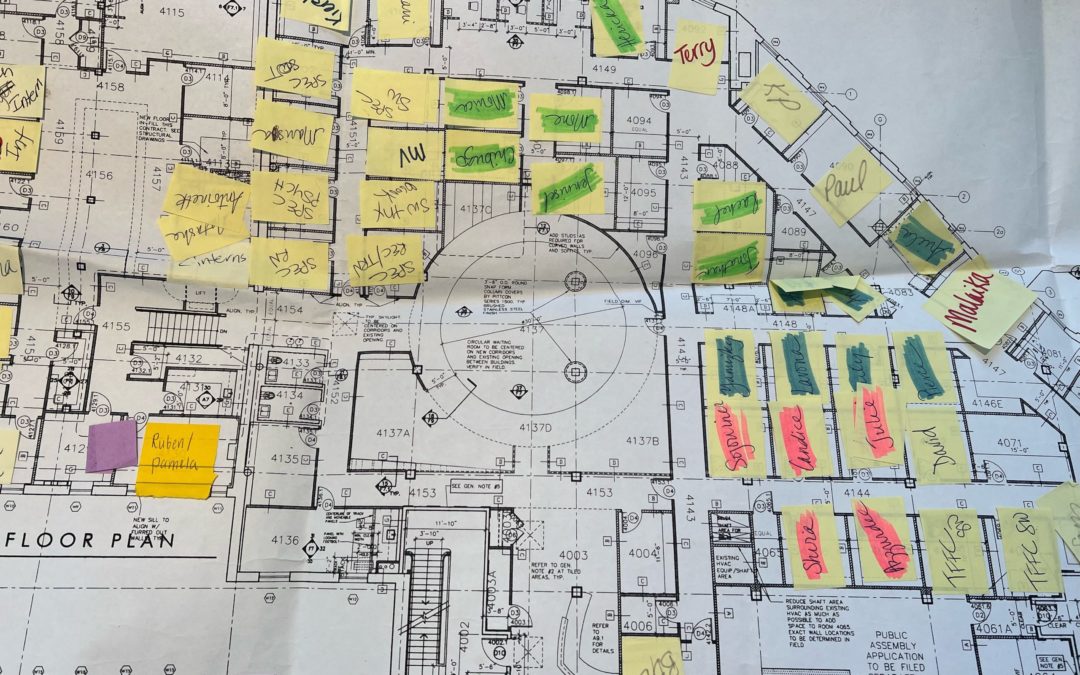As JCCA staff settle into our new Bronx office, we reflect on what brought us to the borough in the first place
Around the turn of the millenium, NYC ACS directed child welfare agencies to install program offices within the communities they served. For decades, most of JCCA’s non-residential services (foster care, prevention, and others) had primarily operated from offices in Manhattan–namely, a posh corner of Midtown East. However, this meant that JCCA’s clients, who increasingly lived in the outer boroughs, had to schlep into the city for many core services, from supervised parental visitation to annual health and wellness checks for foster youth.
Before long, it was announced that sites had been chosen in the South Bronx and Flatbush, and the new offices opened in 2001.
While staff understood the value of being closer to the children and families they served, there was widespread apprehension about moving away from the Lexington Avenue office. Todd Leonard, JCCA’s Director of Therapeutic Foster Homes, was part of the inaugural group who made the move uptown:
The South Bronx has never had the best reputation, but even so the neighborhood was nothing like it is today. When we arrived it felt like there was nothing but a subway station rising out of the earth. Empty lots still dotted the neighborhood. Developers weren’t interested and gentrification was years away. We jokingly referred to our new office as ‘Fort Apache.’
Marisol Arroyo, another member the initial group, knew the area better than most:
I had been the vice president of a baseball league that held games in the neighborhood. Keturah knew this and sent me to community board meetings, police events, anything. I helped to integrate us into the area by telling people who we were and assuring them we were here to help.
Despite my familiarity with the area, however, I wasn’t thrilled about the move. And I wasn’t alone. The crime rates were still high and there were a number of detox and rehab facilities nearby. Many staff were reluctant to leave a more prestigious location in the city. Thankfully, these feelings weren’t swept under the rug. We had many discussions and staff felt included in the shift in culture. People had a chance to voice what was on their mind.
In contrast to the Bronx office, the Brooklyn office was located yards from picturesque Brooklyn College, right where Caribbean-inflected Flatbush meets Midwood. The geographic and demographic distance between the two locations was striking.
“It was a little like West Side Story,” Leonard says, “with the Jets to one side and the Sharks to the other.” The feelings and emotions around the move–and what it meant for the staff who chose Brooklyn rather than the Bronx–were intense and sometimes painful.
“Something positive came out of it, however,” Leonard continues. “It marked the true beginning of the race equity conversation at JCCA. We hosted a series of meetings that gave us an opportunity to surface the many unspoken feelings generated by the move. This blossomed into a way to talk not just about our staff, but also about the families we serve.”
In addition to the honest conversations the move sparked at JCCA, time helped ease the discomfort, and the new offices became beloved. Dr. Amy Morgenstern, who joined the Bronx office in 2008, reflected on the sense of community that grew in within the physical space:
The auditorium in particular became an important gathering space for us, in good times and bad. It allowed the whole staff to be in the same room. We held events for our families and memorials for people who passed away. It was a place where we had some really hard conversations, where we processed local and national tragedies together.
Many Bronx staff also remarked fondly on how central waiting room––“the rotunda”––filled every afternoon with children and families. The room represented the beating heart of the Bronx operation, and it will be missed.
On the occasion of the new move, longtime staff were wistful about the their memories of the two decades lived and worked within those walls. Carmen Diaz remembers potlucks and Halloween parties: “One year we built a haunted house in the office, which included a big tunnel made out of boxes,” she said. “The kids loved it.” Diaz and Marisol Arroyo were both pregnant when the office opened and gave birth two months apart. Arroyo’s water broke in the office. Amy Morgenstern said that she’ll miss sharing an office wall with Todd Leonard––and having to bang on it to ask him to turn his music down.
What began in reluctance and unease, ends in fondness and appreciation. Todd Leonard:
As we packed up and prepared to move out of the office I felt the need to recognize the commitment that opening that office in the first place had signaled. We developed a footprint in a truly underserved community, something we maintained for 20 years and continue to build on as we expand into our new office. We were one of the first agencies to show up there, but many followed behind us. There was trepidation about making a home in a neighborhood that was not familiar to all of us, but we learned to love that place.
